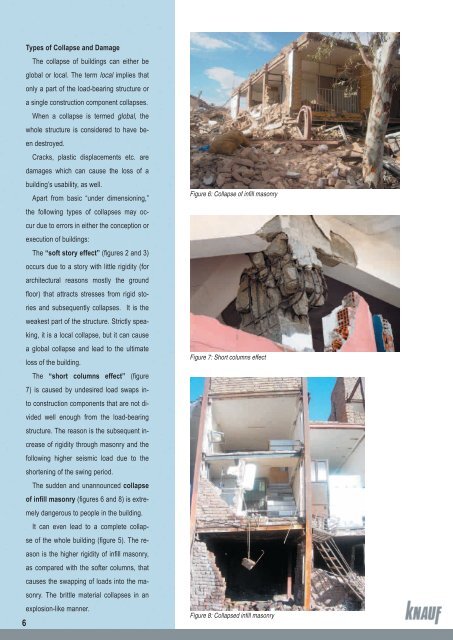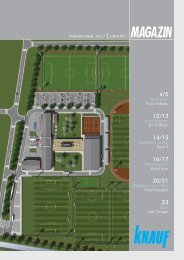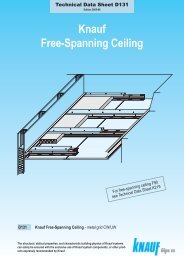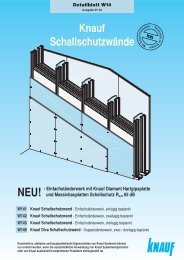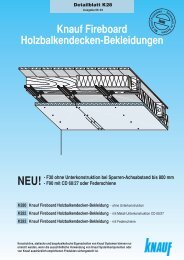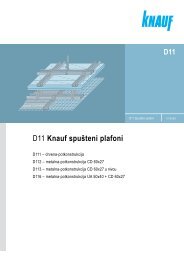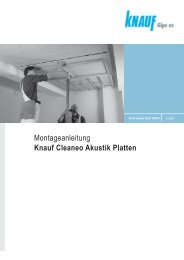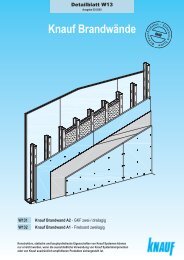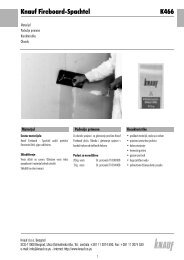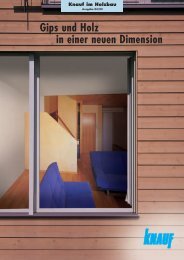Knauf Seismic Design
Knauf Seismic Design
Knauf Seismic Design
Create successful ePaper yourself
Turn your PDF publications into a flip-book with our unique Google optimized e-Paper software.
Types of Collapse and Damage<br />
The collapse of buildings can either be<br />
global or local. The term local implies that<br />
only a part of the load-bearing structure or<br />
a single construction component collapses.<br />
When a collapse is termed global, the<br />
whole structure is considered to have been<br />
destroyed.<br />
Cracks, plastic displacements etc. are<br />
damages which can cause the loss of a<br />
building’s usability, as well.<br />
Apart from basic “under dimensioning,”<br />
the following types of collapses may occur<br />
due to errors in either the conception or<br />
execution of buildings:<br />
The “soft story effect” (fi gures 2 and 3)<br />
occurs due to a story with little rigidity (for<br />
architectural reasons mostly the ground<br />
fl oor) that attracts stresses from rigid stories<br />
and subsequently collapses. It is the<br />
weakest part of the structure. Strictly speaking,<br />
it is a local collapse, but it can cause<br />
a global collapse and lead to the ultimate<br />
loss of the building.<br />
The “short columns effect” (fi gure<br />
7) is caused by undesired load swaps into<br />
construction components that are not divided<br />
well enough from the load-bearing<br />
structure. The reason is the subsequent increase<br />
of rigidity through masonry and the<br />
following higher seismic load due to the<br />
shortening of the swing period.<br />
The sudden and unannounced collapse<br />
of infill masonry (fi gures 6 and 8) is extremely<br />
dangerous to people in the building.<br />
It can even lead to a complete collapse<br />
of the whole building (fi gure 5). The reason<br />
is the higher rigidity of infi ll masonry,<br />
as compared with the softer columns, that<br />
causes the swapping of loads into the masonry.<br />
The brittle material collapses in an<br />
explosion-like manner.<br />
6<br />
Figure 6: Collapse of infi ll masonry<br />
Figure 7: Short columns effect<br />
Figure 8: Collapsed infi ll masonry


